Water collector, or Aquaille - unpretentious perennial plant of the family of ilok. Starting from the XVII century, it is grown everywhere and enjoys great popularity among the flower water due to the exquisite refinement of inflorescences and unpretentiousness in care. The waterborne can grow anywhere: in the open sun, in a modest shadow of trees, in full shading, it practically does not extinct, multiplies with self-sowing, undemanding to the soil and grows many years in one place. This is perhaps one of the most simple in the care of perennials, which is distinguished by extraordinary beauty.
Waterboard, Interesting Facts
The centuries-old period of cultivation of Aquailia around the world consolidated a lot of curious legends behind the plant.
- In different countries it is called differently: Orlik, waterborg, bell, doves, boots. The Latin name Aquilégia comes from two words denoting the concepts of "water" and "collect".
- Throughout America, Aquailia (there is a dove of Columbine) is a symbol of female infidelity. In some other countries, there are references to this flower as a symbol of betrayal and temptation.
- In Norway in the medieval period, the grass collector personified the goddess of fertility and love Frey. However, often the inflorescence of Aquillegias was compared with the Svodovsky cap and denoted as a symbol of nonsense.
- The French were very careful about this perennial, because they believed that Aquaille was a sign of a grumpy woman. For this reason, this flower has never been in wedding bouquets and floral decorations.
- In England, the water collector was very honored. He was called "Team Lion", and believed that he adds strength and endurance. The British gave him another name - "House of meetings", because his inflorescence reminded them crowded people.
- During the time of Ancient Germany, the catchment was made by mystical properties. The Germans believed that the grass buds can open the door to the otherworldly world, and often ascended them as the elves shoes.
- In Christianity, the catchment took an honorable place. He was perceived as a symbol of the Holy Spirit, and the petals of inflorescences served as holy gifts. There is a dogma, according to which inflorescences are shoes for the Blessed Virgin Mary. Among Christians, Aquille is called "Mountain Bell" and is able to protect against evil effects.
Waterboard, Botanical Description
In kind, about 100 wild species is identified in the genus. In the culture, only their small part is grown. You can learn the flower water collector by its incredible inflorescences of the most unusual pains, as well as on an elegant troch foliage with a gentle sizerna.
- The leaves of Aquillegia in length reach only 5 cm, their width is not more than 3 cm. Their surface is moisture-repellent, so the dew or rainy droplets are first assembled into one large drop, and then gracefully roll down.
- The foliage forms a thick root rosette. Breaking cycle biennial. In the first year after seeding, the kidney of recovery is formed, from which a thick literal socket grows by autumn. With the arrival of spring among the foliage, the stem appears, which soon rises above it is height from 30 cm to the meter. It begins to confidently covered with leaves and bounce with flowers.
- In Akviliagia, blundering structure, flowers can be solitary or assembled by groups of 10-12 buds.
- The root system is represented by a dense root that germinates deep into the ground.
- The crown is represented by five separated petals and the same number of cups. This creates a funnel effect with spurs at the end.
- The flowering of the catchment falls at the beginning of the summer season. After complete dissolution, the bud pleases its beauty for a whole week. Fading flowers are gradually replaced by new, so bloom lasts about a month.
- The fruit of the catchment is a small pod-flyer. It is kept in poisonous coal seeds, resembling poppy seeds. After a complete ripening, the seeds are hurt and easily spread with the gusts of the winds. The germination of the seed material is saved only 12 months.
- The flower of the waterborg is a perennial, actively blooming 2-4 years in one place. Thanks to self-sow, there is a regular renewal of bushes.
Warranty types of Aquillers in China and Japan are characterized by their form of buds: they have no spurrs, and the color of the petals is bright yellow. On the territory of Europe there are varieties of catchment with elongated and slightly bent spurs. In North America, types of Aquillets with long and reprehensive spurs are dominated with a two-color color and a predominance of golden, crimson, yellow tones.
Attractive varieties and varieties of water collector
Despite the abundance of wild species of Aquailia, only some of them cultivate:
- Ordinary Aquail - European variety of 45-85 cm high; The inflorescences of the average value of up to 5 cm in diameter. Color Buds are represented by all the shades of blue and purple. There are many interesting varieties with simple and terry inflorescences, with high spurs or without them. Famous of them: Flore Plena Black, Grannys Bonnet, Nivea, Peachy Woodside, Green Apples, Wink. The appearance is winter-hardy and withstands the temperature to -35⁰.
- Akveliya Alpine - This view after the appearance in the garden gives the most real alpine freshness. A low (up to 45 cm), the catchment is distinguished by an interesting color: its flowers with a downtal head are striking with their lilac blue color. They are large (about 8 cm in diameter), with shortened and neatly curved spurs. Flowering species falls on June-July.
- Akveliya Golden-flowered - a rich view with proudly raised inflorescences of golden shades. The birthplace of the catchment is North America, so in addition to winter resistance, he has been inherent in heightened drought resistance.
- AKVILIA FERE ERACY, or AKITSKAYA - TRADE THE TREATMENT OF THE SUNDAR Garden. The height of the plant comes up to 65 cm, the root rosette is thick with long-barrel foliage. The inflorescences of the catchment of a peculiar purulent blue color with a blurred border of milk color. Their diameter is 5 cm, there are spurs with rounded ends. The view perfectly multiplies with self-sowing, winter-hardy. Large varieties: Alba, Nano Alba, Ministar, White Jewel.
- Hybrid Waterboard - Hybrid, obtained as a result of crossing the catchment of ordinary and several American species. The height of different varieties varies: from 45 to 100 cm. Spovers are also found different lengths and shapes. Flowers are large, terry or ordinary, their diameter is 7-9 cm. Petals color is the most different: from heavenly to dark purple, often with white crossing. Popular varieties: NORA BARLOW, Black Barlow, Ruby Port.
- Canadian Akvilia - Bright North American View. Inflorescences at the type of bug-and yellow color with high reprehensive spurs. Water collector prefers shaded, wet places.
- Akveliya Dark - European view with gentle-nasy leaflets and gracefully doried inflorescences of purple color. The height of the stalk can reach 80 cm, depending on the varietal features. Shorts of inflorescences are short, curved, with elongated stamens. It grows on a slice, often serves as the basis for the removal of new varieties with a dark color.
- Olympic Akveliya - Plant from the Caucasus and Asia Minor. Stems at the form are pubescent, thick, the buds are sky-blue, large, with straight spurrs. Water collector flowers in May-June.
- Skinner Waterboard is the North American handsome man with dumped inflorescences that play red and yellow shades in the sun. Externally, the flowers resemble the playful bells, and attract enthusiastic views thanks to their excellent color. View with average winter hardiness (up to -15 ºC). Flowers drooping, red-yellow, spurs straight.
Methods of breeding of waterball
You can grow akveliya on the plot from seeds. And if you have already grown, this is a beautiful plant, it can be multiplied by the vegetative method.
The breeding of the waterborne seeds
- Sowing seeds of Aquailia can be carried out immediately after their collection. This increases the percentage of germination, since the seeds quickly lose their ability to grow. Sowing in spring, and after the appearance of sprouts, their transplant is carried out.
- If you did not succeed in sinking freshly placed seeds, you need to store them in a dry place with a reduced air temperature. To preserve their germination during winter, they are often mixed with disinfected land and stored in the refrigerator.
- For the next year, in March, the seeds of the waters are cleaned from the impurities of the Earth and seed into the boarding boxes with a wet loose substrate. It should consist of a part of sand, parts of a leaf land and part of humoring.
- Seeds are distributed over the earth surface and sprinkled with a sifted substrate in 3 mm. To create a suitable microclimate, the container with seeds are covered with burlap, placed in a dark room, where the temperature is held at 16-18 ° C.
- As needed, the soil is moisturized from the spray gun. The first sprouts are gluing in 8-14 days. After the formation of a full-fledged sheet - it is usually observed in May - the young piglets roll into a loamy substrate.
Criminal reproduction of stallowing waterborne
Waterboards reproduction of stalling is a very easy lesson. With the arrival of spring, while the leaves have not yet blocked, the young sprout "with the heel" is cut. Immediately after that, the lower part of the escape is treated with rhoin, and then planted into the nutritional soil. It is important to build guy: cover the pot of a cropped plastic bottle.
It is desirable to use loose ground or river sand as soil. It is necessary to keep the escape in a shaded place, watering the soil follows without opening the greenhouse. Greenhouse ventilation can be started on only 10 day after disembarking escape.
Full rooting occurs in about a month. After that, the escape digs and put a landing at the prepared place.
Breeding of the water collector dividing bush
The division of the bush is not a very popular method of reproduction, which is used to preserve the varietal features of hybrid forms. Use it only in exceptional cases, since the root system of the waterborne is extremely reluctant after division.
If you need to divide the bush, it is done in the early spring. You can divide a 4-year-old bush. It is neatly digging, the roots are carefully cleaned from the ground, at an altitude of 6-7 cm cut off, the foliage is also removed.
Then the root strain cuts along the longitudinal line, and there should be 3 full kidneys and several young roots on each part. The plurality of the cut is rubbed and landing the decene in the tank with nutritional land.
The process of rooting from the catchment breaker is long and complex, the decene can continue to hurt, and some are dying at all.
Water collector flower, landing in open ground
The catchment is unpretentious in choosing a place of growth, but if you pay a little time and pick up a good place for a flower, the soil and put it on the agrotechnology accepted rules, the plant will be much more willing to bloom and rarely root.
Choosing a place and soil before planting a waterball
The water collector is a plant that grows in any place, but abundant and bright bloom occurs only in moderate half. There is no special demands to the soil, but the plant prefers humus, loose and enough wet soil.
For rapid growth and abundant flowering before planting, it is advisable to drain the soil with compost. Per 1 cu. m is enough to add 1 bucket. You need to drag the ground by 20-35 cm deep.
The process of planting the waterborne in the ground
Watercolor landing is carried out in the prepared soil:
- No more than 10 plants are planted per square meter.
- If the varieties are tall, the distance between them should be 40 cm, and if the lowered - 20-25 cm.
- Seedlings are immersed in shallow wells, seeds - seed into the soil and immerse at a depth of 0.5-0.8 cm.
- After landing, the Earth is abundant moisturized, the seedlings are shared if necessary.
Water collector care in the garden
Plant care is rather modest and does not create a lot of difficulties. The main thing is to provide abundant irrigation and put the weeds in time. Since the Winter-hardy Waterboard, it is not necessary to ensure reliable shelter.
Watering and feeding the waters
Akvilia prefers moisture, so it needs frequent watering. If you do not provide the desired soil moisture, the shoots become dumped, flowering is reduced. However, this does not lead to the death of the plant, because its long rhizome can eat moisture from the ground even in the very dry weather.
It is important to regularly get rid of weeds, especially during the period of active growing season when young shoots have not grown yet. At the same time, the soil should be loose to saturate with oxygen.
Fertilizer make infrequently - 2-3 times over the summer. The first feeding is carried out at the moment of activation of growth, then - during flowering. You can use any complex fertilizer for blooming crops.
Trimming and Winning Wintering
Conducting optionally. This is done only if you need to warn samos. Immediately after flowering, the above-ground part is cut to the line of the roar rosette.
Most of the types and varieties of the waterborg are winter-hardy, so the shelter does not need to do for them. But in the regions with a harsh climate, young plants need to be covered with a thin ball of foliage foliage.
Diseases and pests of the catchment
The waterball is infrequent. The cause of his defeat can be a long rainy weather or a dark, raw place of growth.
- Most often, the waterborg is striking the powdery dew. It develops under conditions of dampness. The foliage plant is covered with a white linded flare, and eventually begins to die. The disease quickly affects neighboring cultures, so you need to handle the flowers with copper-containing agents as soon as possible, for example, toopaz.
- Much more dangerous for plants Mosaic, rot, spotty. Such diseases lead to the complete death of the flower.
- From the pests, the waterborg is striking mites, slugs, wave, caterpillars. For prophylaxis, it is recommended to disembark together with vitrors, which are able to scare pests.
Waterborne in the garden, combination with other cultures
- The watershed applied to create bright mixed landings. Popularity is popular both disembarking from different varieties of Aquillegia and combined landings with other plants.
- Little hybrids are successfully combined with perennials: small cloves, stamps, advocate. Especially beautiful is such a composition on the Alpine slide.
- Tall water collectors planted with lupines, high iris, decorative poppies, cereal crops. Perfectly looks at Aquille with a fern and an anstic near the artificial reservoirs.
- Waterborne blinking blossoms look good after drying, so used to create IDA and panel. Some varieties are grown on a cut and make chic floral compositions from them.

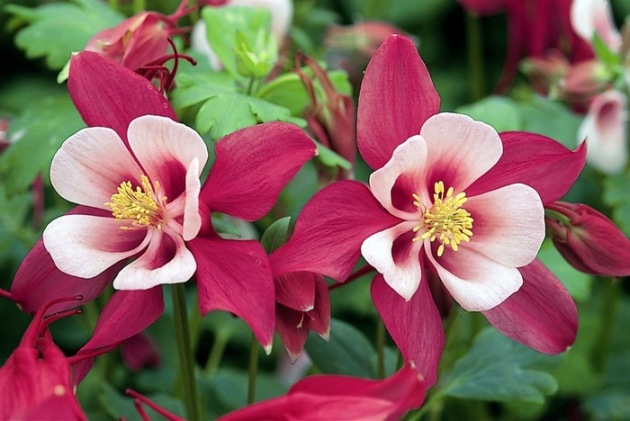
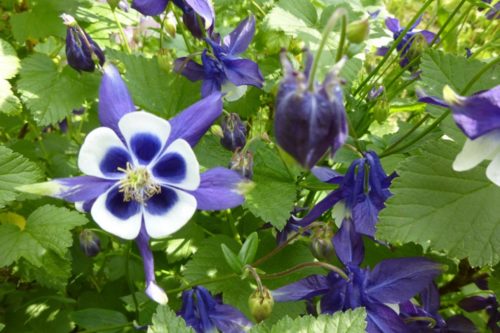
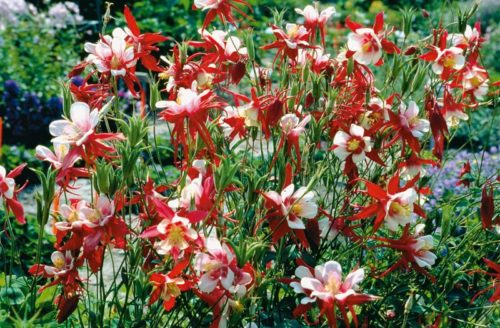
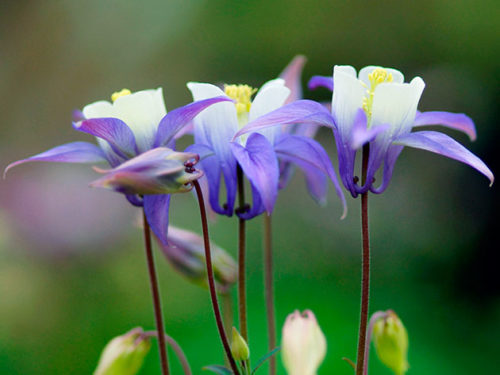
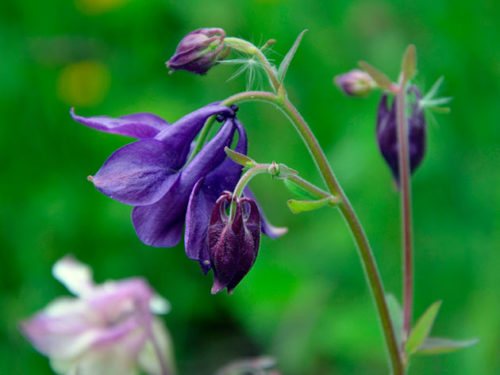
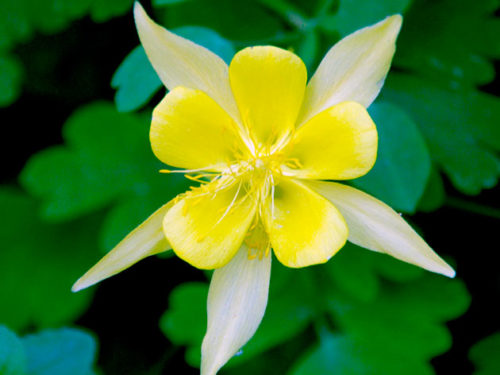
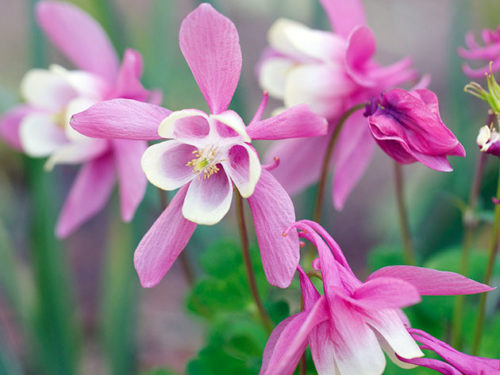
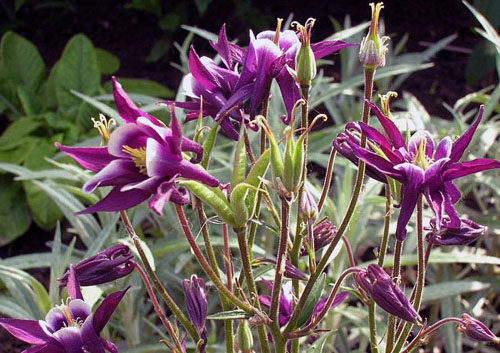

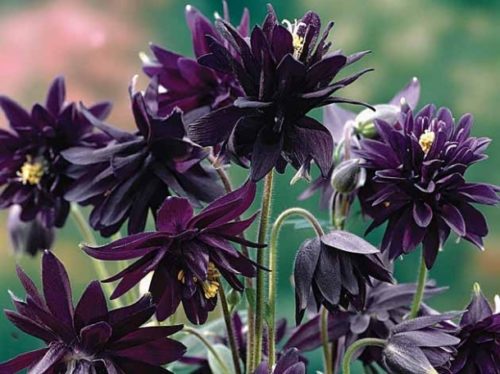
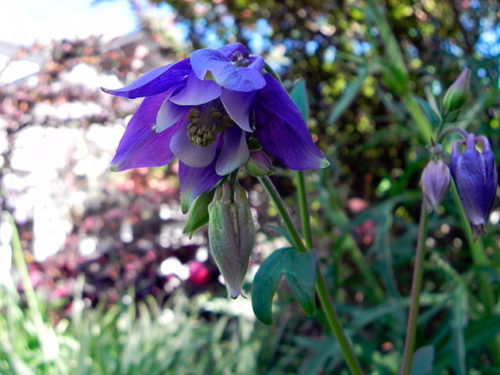
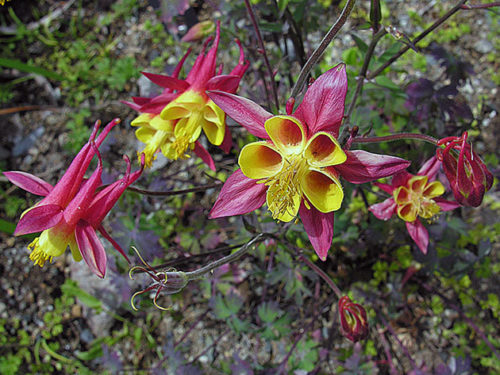
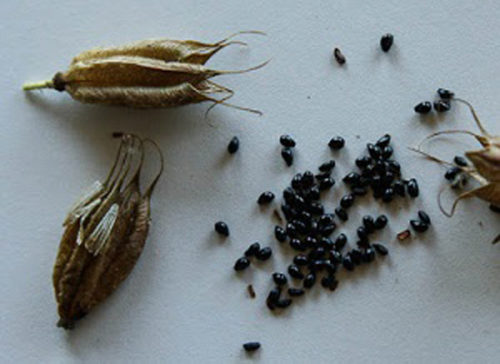
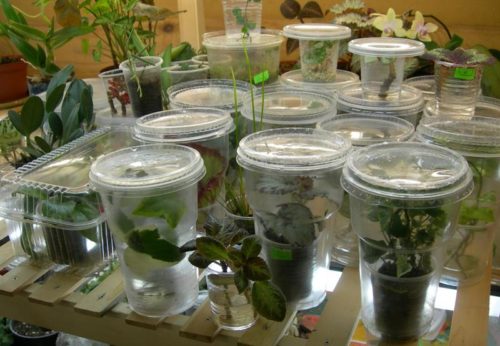
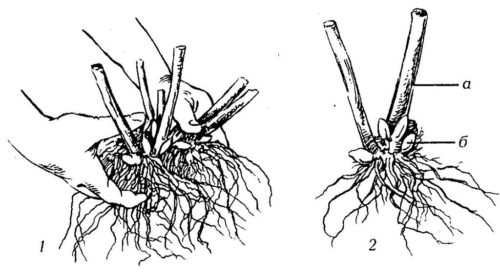
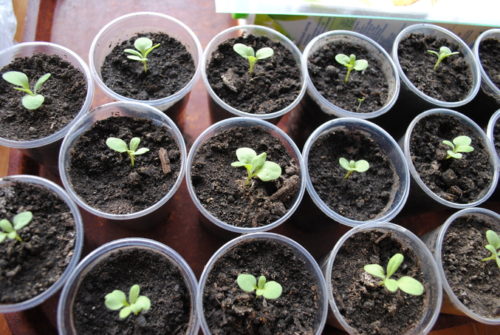

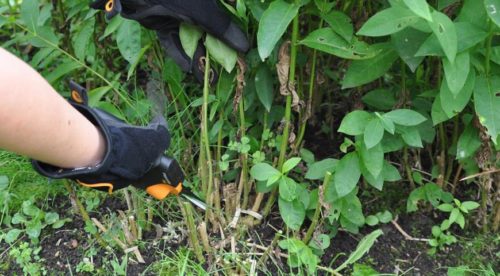

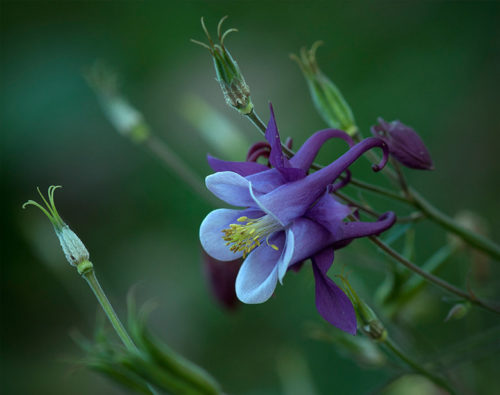
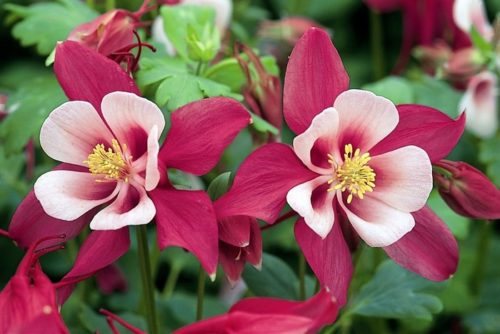
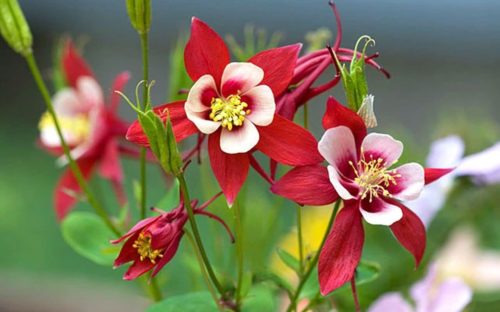
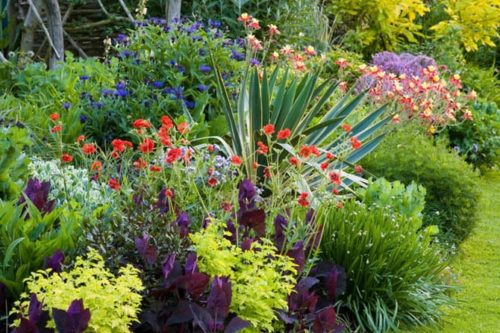
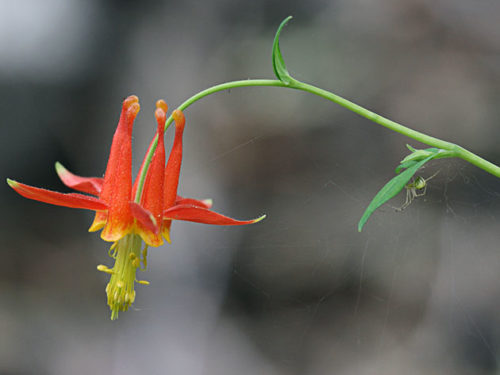
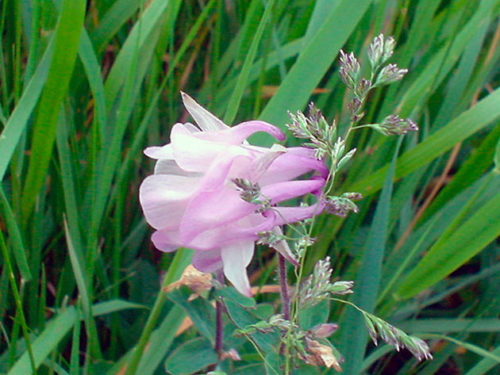
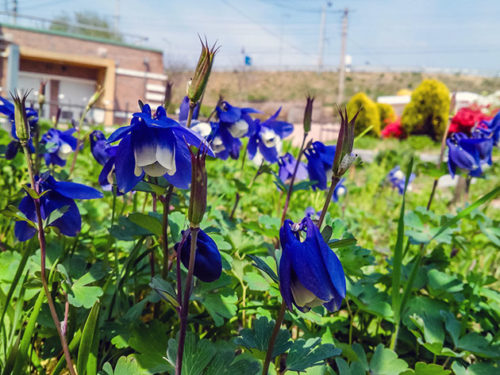













 Start a discussion ...
Start a discussion ...